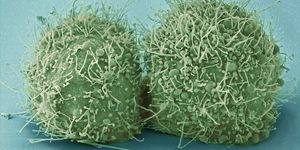Machines Learn the Difference Between Autism and Schizophrenia
Autism spectrum disorder and schizophrenia — one is a developmental disorder affecting communication and behavior, while the other causes those affected to interpret reality abnormally. Though seemingly completely different conditions, neuroscientists have, for a long time, suspected a strong link between them. Not only do some of the presentations of these disorders overlap, but autism spectrum disorder patients are 10 times more likely to develop schizophrenia than those from the general population.
The clinical challenge is that most of the diagnostic procedures for psychiatric conditions are largely subjective and rely on psychiatrists picking up on sometimes extremely subtle behavioral cues to make a definitive diagnosis. Researchers at the University of Tokyo believe that a powerful combo of next-generation brain imaging technologies and machine learning could be the key to radically transforming mental health care as we know it.
In a recent study published in Translational Psychiatry, Shinsuke Koike and colleagues designed machine learning algorithms, training them to interpret magnetic resonance imaging (MRI) brain scans from over 200 adults who had been diagnosed with an autism spectrum disorder, schizophrenia or both. They also included a cohort of neurotypical people who did not experience any mental health concerns. During this “training” phase, the algorithm scanned the images, looking for variability in the thickness, surface area, or volume of various brain regions.
To test out the algorithm’s capabilities, the researchers presented it with an additional 43 patient scans with almost unbelievable outcomes: the machine’s diagnoses matched the psychiatric assessment with up to 85 percent accuracy. The biggest breakthrough was the ability of the machine learning platform to tell the difference between the different categories of patients in the study, even picking up those who were just determined to have schizophrenia risk factors.
Though there are several published studies exploring the potential of artificial intelligence to assist with clinical diagnostics (all with varying levels of success) Koike believes the accuracy of the teams' newly-developed algorithm lies in the “clean” data used during the learning phase — all images were taken on a single MRI machine.
“If you take a photo with an iPhone or Android camera phone, the images will be slightly different. MRI machines are also like this - each MRI takes slightly different images, so when designing new machine learning protocols like ours, we use the same MRI machine and the exact same MRI procedure,” said Koike.
Sources: Translational Psychiatry, University of Tokyo.









